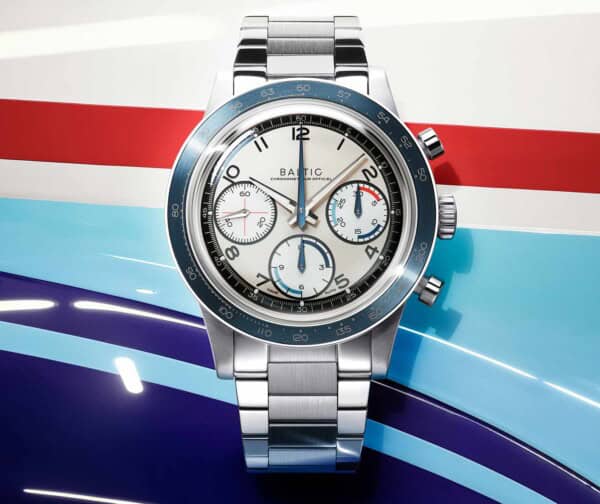Late last year Stowa announced a new addition to the Antea line, the “Back to Bauhaus” collection. Born out of a collaboration between Stowa’s Jorg Schauer and famed German designer Hartmut Esslinger, the B2B series revamped the Antea line by introducing a number of playful dial colors, a “new” font, and a slightly redesigned case. Around the time of that release Schauer hinted at a second watch, the culmination of his work with Esslinger. That watch was officially unveiled this year at Baselworld and it’s an absolute stunner. Introducing the Stowa Rana.
Over the past few years Schauer has been steadily modernizing Stowa’s catalogue. With brands both big and small looking to the past for inspiration, Stowa has decided to buck that trend so as not to fall into the “retro trap” of present-day watch design. Schauer first introduced a contemporary flieger range with a number of different models, among them the TO1, the 24 H Racing Countdown, the GMT Worldtime, and most recently the TO2. Then came the aforementioned B2B collection. The Rana continues that trajectory.
In terms of manufacture and design, the Rana is arguably one of Stowa’s most ambitious watches. The complex case features an entirely new design that could not be manufactured through conventional metalworking methods. The mid-case had to be made through a labor-intensive process called metal injection molding (MIM), whereby feedstock consisting of metallic powders, wax, and plastic binders is fed into a hollow mold using plastic injection molding machines. The resulting product is then condensed in a furnace process called sintering, melting the metal to achieve a solid density of anywhere between 96% and 99%, which is comparable to parts made through classic metalworking processes. The ensuing form is then hand finished to a high standard in Stowa’s workshop.
Resting on top of the mid-case like a rounded flying saucer is the “floating disc,” a beautifully sculpted bezel hand-brushed to perfection. Coming in at 37.5mm by 42mm, it’s reasonably sized and sleek in person. It wears comfortably on the wrist due to the bezel’s positioning and flattened sides, which keep the watch from getting caught on shirt cuffs. Beyond functionality, the flattened sides also give the Rana its totally unique profile.
The dials are equally as complex. The “dynadot” variant is a sandwich dial; the top layer is laser engraved stainless steel that is then colored black or white, and the bottom layer is covered in luminous material. Dynadots, or “dynamic dots,” were designed by Esslinger and introduced on the bezel of the Seatime Black Forest Edition 1 as a new way to track time, with each advancing dot growing in size to indicate that progression. On the Rana, the dynadots appear on the dial as hour markers, getting larger as you advance along the dial. There is also a numeric version utilizing the Bauhaus STD font first used on the B2B series, available in black or white.
At the heart of the watch is a top-grade 2824 chronometer certified in Glashütte, an achievement made possible by the addition of a woodpecker regulator developed by Muhle. It effectively controls the overall rate of the movement by making the hairspring longer or shorter, allowing for easy regulation. The movement is highly finished and features a custom rotor featuring an engraved frog, a direct nod to the design firm Esslinger founded in 1969, Frog Design Inc. (“Rana” is also Latin for frog.)
Conclusion
The Rana may not be everyone’s cup of tea, but there is something to be said about Schauer pushing Stowa to new heights. He clearly has a vision for the brand, and though it might be difficult to swallow for some long-standing fans, I think Stowa will do just fine as long as they continue to offer a range of heritage pieces alongside their new releases. I, for one, am a big fan of the new direction, at least in terms of the design, and I am excited to see Stowa continue to push the envelope in the future.
With that said, I do hope future watches are more in line with the price point we’re accustomed to with Stowa. The Rana is roughly $3,900 for the dynadot variant, and $3,520 for the numeric dial, and as it stands it is the most expensive piece in the brand’s catalogue. At that price, it also takes Stowa into a highly competitive market. Some of price increase is clearly a result of the labor intensive manufacturing processes, and some of it comes from the modified movement and chronometer certification. While I would gladly forgo the latter for a friendlier price, I can understand Schauer’s desire to create a premium product.
To purchase, head over to Stowa’s newly redesigned E-store.









 Featured Videos
Featured Videos











